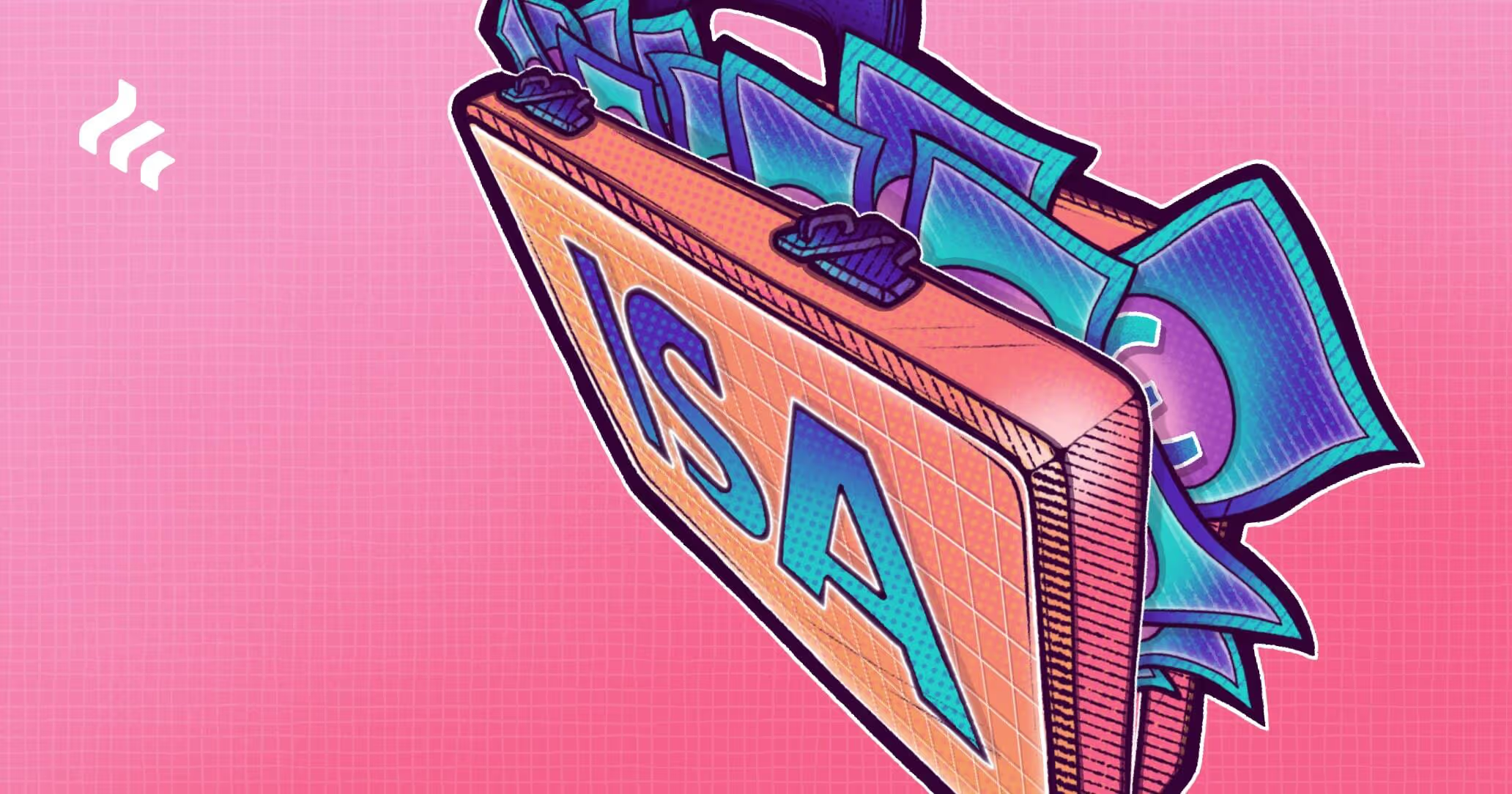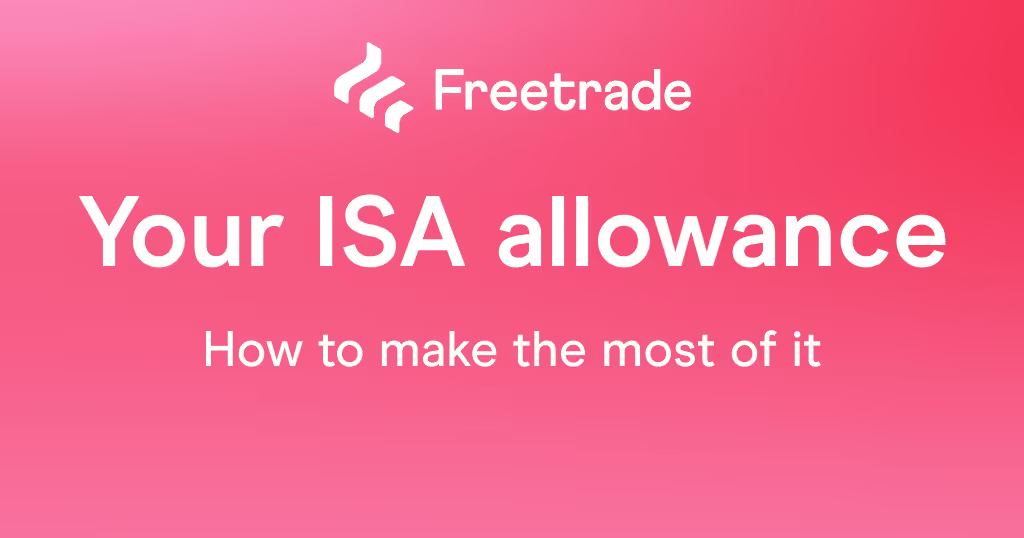At first, understanding how many ISAs you can have might seem hard to wrap your head around.
But, once you get to grips with the basic ISA rules and learn how these accounts differ, everything starts to make a lot more sense.
Let’s dive into everything you need to know about using more than one ISA.
ISAs: the lowdown
You’ve probably come across an ISA account before. But, with new additions to the ISA line-up cropping up from time to time and periodic tweaks to the rules, it’s worth having a quick refresher.
The acronym ‘ISA’ stands for ‘Individual Savings Account’. It’s a tax-efficient account that allows you to save up to a designated amount each year.
Here’s a quick rundown and overview of the way ISA wrappers work:
- You can put in up to £20,000 each tax year. The current tax year is from 6 April 2023 to 5 April 2024.
- There are five different types of ISA: Cash, Stocks and Shares, Innovative Finance, Junior, and Lifetime ISA.
- Your yearly allowance can be split across any of those different ISA accounts.
- You don’t pay income tax on dividends or savings interest from investments in those accounts.
- You don’t pay capital gains tax if you sell investments held within an ISA for a profit.
- Any unused allowance won’t roll over into the following tax year.
Who can open an ISA account in the UK?
You need to be a bona fide and legitimate UK tax resident to make use of an ISA.
You’re also eligible if you’re a crown servant working abroad. For example, diplomatic or overseas civil service. So if James Bond happens to be reading this, you’re all clear to open an ISA.
There are also age limits that apply to each type of ISA:
- Cash ISA - you must be over the age of 16.
- Stocks and Shares ISA or Innovative Finance ISA - you have to be at least 18.
- Lifetime ISA - you need to be over 18 but under 40.
- Junior ISA - you have to be older than 16 and the child has to be under 18.
Can you have more than one ISA?
Yes, it’s possible to have more than one ISA. Technically there’s no limit to the number of ISAs you can have. But, various rules and restrictions do apply. And you can only open one of each type of ISA every tax year.
Also, your yearly £20,000 allowance is spread across all your ISAs. The only exception is the Junior ISA, where the £9,000 limit is separate from the parent or guardian’s own ISA allowance.
Can you have two stocks and shares ISAs?
It’s perfectly fine to have multiple stocks and shares ISAs, but you’re only allowed to pay into one stocks and shares ISA each tax year. To have two accounts, you’d need to open them in separate tax years.
Here’s some more information explaining how a stocks and shares ISA works.
Can you have a cash ISA and a stocks and shares ISA?
Yes, it’s definitely possible to have a cash ISA and a stocks and shares ISA. You can also split your yearly £20,000 allowance across these two accounts however you see fit.
For example, you can put £10,000 into a cash ISA and £10,000 into a stocks and shares ISA this tax year. But, you can’t put £20,000 into each type of account in a single year.
Each type of account will suit different saving and investment goals. You can compare the benefits of a cash ISA vs stocks and shares ISA to find out which could be more suitable for your needs.
Can you pay into more than one ISA in the same tax year?
You’re able to pay into each one of your different types of ISA accounts in a single tax year. But, you’re not allowed to pay into two accounts of the same ISA type in the same tax year.
So, in a single year you can’t put money into multiple stocks and shares ISA accounts held with a number of providers. But you can contribute to your stocks and shares ISA account and your lifetime ISA account in a given tax year, for example.
It’s a little bit annoying but the benefit is you’re less likely to end up with ISA accounts scattered all over the shop, making it easier to keep track of your investments along the way.
Can you have two ISAs with different providers?
Sure, you can have two ISAs with different providers. But if they are the same category of ISA, they have to be opened in separate tax years. That means if you’re opening up multiple accounts in one tax year, they’ll have to be different types of ISAs.
So, you can subscribe and open up one of each type of ISA within each tax year. This means you could end up with a total of four new accounts this year, eight over two years, and so on.
But, you can’t pay into two of the same types of ISA held in different places during a single tax year.
The exception is a Junior ISA. A child can only have one active JISA at any time.
The advantages of having more than one ISA
Not every account will suit your needs, but it’s always great to understand the options at your disposal.
You may have a selection of goals that you’re saving for simultaneously. For example, you may want cash savings for an emergency fund, long-term savings to invest, and funds to put towards a house deposit.
So, you might decide to split up your allowance like this in the 2023/24 tax year:
- £15,000 into your Freetrade stocks and shares ISA
- £1,000 into a cash ISA
- £4,000 into a lifetime ISA
Now, this isn’t a serving suggestion, just an illustration and realistically, your circumstances and needs will change over the years. Luckily, you can adjust your approach to ISAs depending on what’s happening in your life.
There’s no point opening a bunch of accounts for the sake of it. But, using more than one ISA can be extremely useful when it’s appropriate.
Your eligibility to invest into an ISA and the value of tax savings will depend on personal circumstances. Remember the value of investments can go up and down in value, and when you invest, your capital is at risk.
Do you need to open a new ISA every tax year?
No, it isn’t necessary to open a new ISA every tax year. Each year, your allowances will refresh, but this will apply to your existing account. So you don’t have to open a new account if you don’t want to.
Once you’ve found a provider you’re happy with, you can stay there as long as you like. Any unused allowance won’t roll over into the next tax year, but you will get a fresh new ISA allowance to use up.
Can you transfer one ISA to another?
Yes, you can transfer one ISA to another but there are some important points to keep in mind.
If you want to do a like-for-like transfer where the type of ISA you currently hold is the same as the one you want with another provider, it’s very straightforward. You just have to contact the new provider and fill in some details so they can bring it over for you.
With interest rates so low over the last few years, it has been common for cash ISA savers to think about investing. In this case, a lot of people have transferred a cash ISA to a stocks and shares ISA. Again, this is a simple process of asking the investment platform to bring the cash ISA across for you.
You do need to remember that there’s extra risk with investing though, something a cash ISA won’t include. That means you need to make sure it’s right for you before you make the transfer.
If it is, once the money has been sent through, you can pick your own stocks and shares.
Whatever type of ISA you currently hold, make sure you check in with the provider you want to end up with. They’ll be able to tell you what’s possible and what you need to do to make it happen.
A key point to remember though, is that all of this should be completed without you ever receiving the ISA money personally. If it lands in your bank account, that counts as a withdrawal, and putting it in a new ISA account will eat into your annual allowance.
Make sure it never leaves its tax-wrapped status or you may lose out on the tax advantages you’ve accumulated over the years.
If you think it might be a good option for you, have a read of how a stocks and shares ISA transfer works at Freetrade.
Freetrade is on a mission to get everyone investing. Whether you’re just starting or have loads of experience, you can buy and sell thousands of UK and US stocks, ETFs and investment trusts commission-free via our trading app. Download the Freetrade app today and join over 1M other retail investors.
Eligibility to invest in an ISA and the value of tax savings depends on personal circumstances and all tax rules may change.Before transferring an ISA, please read our page on transferring investment accounts, which explains the options available and gives you the important information you need to know.Please be aware that if you transfer share classes that are not supported by Freetrade, they will be sold and the proceeds will be transferred as cash, which means you will be out of the market for a short period and may have to pay additional costs as a result. If your investments are moved to us as cash, you will be out of the market while your money is being transferred, so you could miss out on growth and income if the market rises during this time. Currently, completion times can be up to 8 weeks but could be longer as the process is reliant on prompt action by your existing providers whose time frames can vary.












